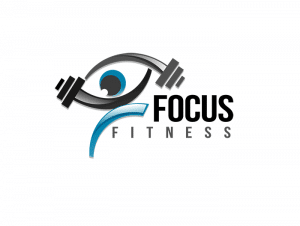There are few industries more competitive than the fitness industry. It seems like everybody is trying to achieve a higher level of fitness. For that reason, fitness companies must spend a great deal of time developing a memorable and effective brand to help them connect with their target audience.
How to Pick the Perfect Logo for Your Fitness Company
The first step in creating a memorable brand is choosing the perfect logo to represent your company. In many cases, a company’s logo is the first thing that a potential customer sees. Whether they see it on the side of your gym, on a social media profile, or on your website, you need to make sure that the logo you pick is something that give people an accurate idea of who you are.
How to Differentiate Yourself from the Competition
What makes you different from your competitors? Answering that question is an important part of creating your brand. No matter where your company is located, your target audience has more than one choice when it comes to choosing a fitness company. You have to stand out if you want to succeed.
Take some time to consider what aspects of your business are unique. For example, you might own the only gym in town that offers spinning classes. Perhaps your gym has longer hours than others in your area. Maybe you make fitness clothing that uses all-natural fibers. The logo you choose should highlight those things to help your target audience understand what you have to offer.
To give you an idea of what we mean, look at this logo we designed for a gym that specializes in weight training:

The logo incorporates a stylized image of a weight lifter. The image itself has a sense of movement, which is perfect for a fitness company. And the blue and black colors signify that this is a serious gym where you can expect to find expert advice on getting fit.
Selecting the Right Images and Colors for Your Logo
The other element of selecting a logo is making sure that the images and colors you choose send the messages you want them to send. In the fitness industry, it’s common to use silhouettes of people or fitness equipment. Many of the images chosen have a kinetic quality, meaning that – as was the case in the logo we just showed you – they have a sense of movement.
If you decide to use an image that is commonly used, make sure to find a way to make your version unique. For example, you might have an image of a barbell, but if your gym caters to women you might make it pink or purple, two colors that are associate with femininity.
The colors you choose can send psychological messages about your business and what it offers. For example, red and orange are two aggressive colors that may indicate that your company caters to hard-core fitness enthusiasts. Green might be a good choice for a company that specializes in Yoga training or natural weight loss. You should work with your logo designer to come up with a color combination that will speak to your target audience.
Targeting Your Ideal Customer
The best branding in the world is only effective if it reaches your ideal customers. You can’t appeal to everybody equally, so it’s best to focus your efforts (and your marketing budget) on the people who are most likely to become customers.
Understanding Demographics and Psychographics
Before the widespread use of the internet, customer targeting used to be somewhat limited. Of course companies could choose publications to advertise in, but unless they were advertising in specialized niche periodicals, they had to place their ads in newspapers or run them on television and hope for the best.
Thanks to the internet and social media, you have two ways to target your customers:
1. Demographics are data that represent your customers in easily quantifiable ways. For example, you can target your customers based on their age, gender, and geographical location. Other potential demographics to use include marital status, income, and education.
2. Psychographics are data that represent your customers’ interests and passions. For example, you might choose to target young women based on the pages they follow on Facebook or the music they listen to.
Ideally, your marketing should use both demographics and psychographics. The more tightly you are able to define your audience, the higher the return on your investment will be.
How to Develop a Customer Persona
Developing a customer persona is a good way to give your ideal customer a face and personality. The brand you create should speak to your customers in a way that feels personal. You can’t accomplish that unless you have a deep understanding of who your customers are.
Depending on what your specialties are, you may need to create more than one customer persona. For example, a gym that targets bodybuilders might need only one persona. However, a gym that offers Yoga classes as well as CrossFit might need two or more personas to market effectively.
As yourself some questions about your customers:
1. Who are they?
2. What do they want from a gym or fitness company?
3. What problem do they have that we can solve?
4. What other things might my customers enjoy?

Answering these queries can help you create a detailed persona to hone your marketing strategy.
The Importance of Social Media Marketing for Fitness Companies
Are you using social media sites like Facebook, Twitter, and Instagram to market your fitness company? If you’re not, then you need to consider starting immediately.
Why Social Media is a Must
It used to be that using social media for marketing was optional, but those days are gone – especially for companies in the fitness industry. People tend to talk about their exercise and fitness routines on social media. They post before and after photos of their weight loss, share information about workouts using fitness apps like RunKeeper, and ask their friends for fitness advice.
To give you an idea of how widespread social media use is, let’s look at just one statistic. In the United States, 78% of the population had at least one social media account as of 2015. That’s a percentage of the entire population, not just adults or internet users. Those are staggering numbers. There is no doubt that a significant portion of your target audience uses social media.
Choosing the Right Sites
It might be tempting to create accounts on every social media site that exists in an effort to maximize you reach. That’s understandable, but it’s also not particularly practical. You have a limited amount of time each day to spend managing your social media presence. Even if you use a scheduling tool, you will still have to spend time monitoring comments and addressing customer service issues.
The solution is to pick the social media sites that your target audience is most likely to use and focus on those. For instance, if you own a high-end gym that targets women, then Pinterest is probably a good place for you to spend some of your valuable time. The demographics of Pinterest skew heavily to affluent women.
Use your customer persona to determine the best social media sites to use for marketing. Then, if you have active accounts on sites that you don’t plan to use, deactivate them. A zombie account – one that’s been inactive for a long time – may hurt you far more than it helps you.
Social Media Marketing Ideas to Grow Your Fitness Company
How should you use your social media accounts? Here are some ideas to help you build your brand, engage new and existing customers, and grow your company.
1. Shoot a video giving prospective customers a tour of your facility. This is an especially good tactic for gym and fitness center owners. Customers who find you on social media may be wondering what your place is like and a video is a great way to entice them to come in.
2. Speaking of video marketing, gym owners should also consider doing demonstrations of particular fitness moves, such as lifts. Showing your technique also builds authority. Companies that make fitness equipment can also use this option by shooting a product demo.

3. Sponsor a fitness challenge on social media. People who want to get in shape often need motivation and social media can be the perfect place to provide it. You can post fitness and diet tips, share daily workout routines, and provide a space for the people who participate to encourage one another.
4. If you cater to corporate clients, an alternative is to run a corporate wellness challenge. Challenges like these can combine weight loss, fitness, and other aspects of wellness.
5. Offer a limited-time promotion on the anniversary that you started your business. For example, you might offer 25% off a membership to the first 25 non-members who come in for a tour of your gym.
6. Feature success stories of customers or gym members. Testimonials are a powerful form of social proof, and fitness is a great area for personal stories because the transformations can be dramatic.
7. Offer a free fitness day where people can come in for a free, one-hour session with a personal trainer. You can require email sign-up and then use your email list to follow up.
These are just a few ideas. Remember to vary the format of the content you share and stick to a regular content posting schedule to get maximum engagement.
Conclusion
Marketing a fitness company has some special challenges. The key to creating a memorable brand and growing your business is to remember that the fitness industry is transformational. That makes it an ideal candidate for sharing stories – and inspiring your followers to become paying customers.
